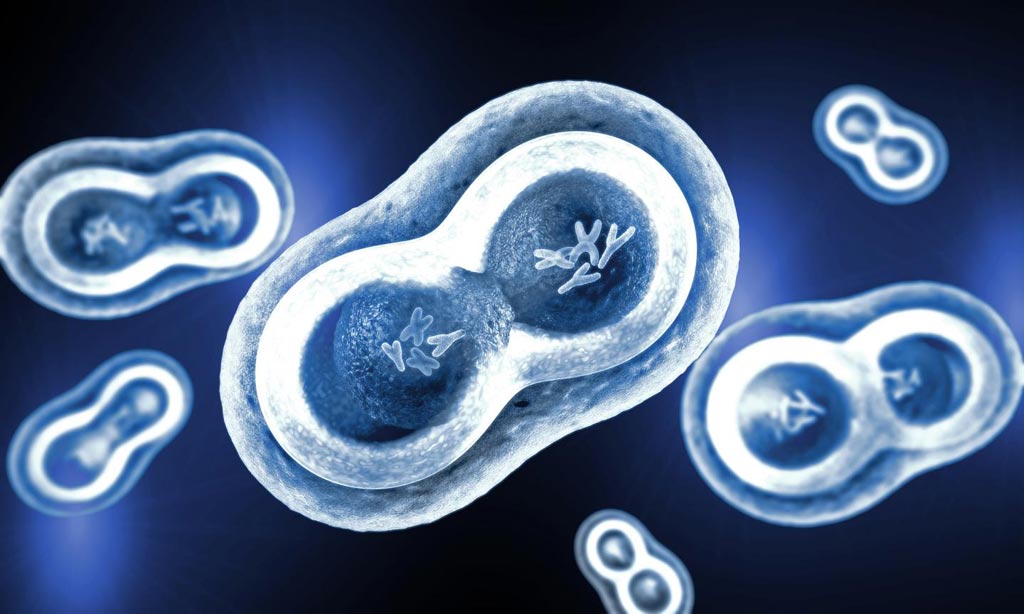Protein Slows Cancer with Cell Cycle Interference
By LabMedica International staff writers
Posted on 05 Jun 2017
A team of molecular biologists has identified a pathway that mediates mature microRNA (miRNA) decay - a process of undoing gene silencing that is less well understood than the processes that mediate miRNA biosynthesis.Posted on 05 Jun 2017
MiRNAs are a small noncoding family of 19- to 25-nucleotide RNAs that regulate gene expression by targeting messenger RNAs (mRNAs) in a sequence specific manner, inducing translational repression or mRNA degradation, depending on the degree of complement between miRNAs and their targets. Many miRNAs are conserved in sequence between distantly related organisms, suggesting that these molecules participate in essential processes. In fact, miRNAs have been shown to be involved in the regulation of gene expression during development, cell proliferation, apoptosis, glucose metabolism, stress resistance, and cancer.

Image: In cancer, cells divide uncontrollably and invade surrounding tissues. By removing a specific protein from cells, researchers were able to slow the cell cycle (Photo courtesy of the University of Rochester Medical Center).
Investigators at the University of Rochester Medical Center (NY, USA) furthered the understanding of miRNA decay when they identified the enzyme Tudor-SN, an endonuclease that interacted with the RNA-induced silencing complex. Tudor-SN was found to target miRNAs at CA (cytosine- adenine) and UA (uracil-adenine) dinucleotides located more than five nucleotides from miRNA ends. Tudor-SN-mediated miRNA decay removed miRNAs that silenced genes encoding proteins that were critical for the G1-to-S phase transition in the cell cycle.
The investigators reported in the May 26, 2017, issue of the journal Science that inhibiting TSN-mediated miRNA decay by CRISPR-Cas9 knockout of TSN slowed cell cycle progression by up-regulating a cohort of miRNAs that interfered with the mRNAs that encoded proteins critical for the G1-to-S phase transition. Thus, removal of Tudor-SN from human cells increased the levels of dozens of microRNAs. This increase in the number of inhibitory molecules resulted in the shutdown of genes that encouraged cell growth by regulating the cell cycle.
"We know that Tudor-SN is more abundant in cancer cells than healthy cells, and our study suggests that targeting this protein could inhibit fast-growing cancer cells," said first author Dr. Reyad A. Elbarbary, research assistant professor of biochemistry and biophysics at the University of Rochester School of Medical Center.
Related Links
University of Rochester Medical Center













